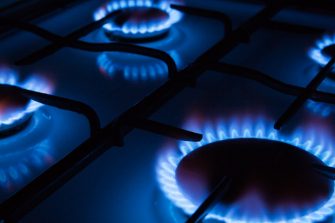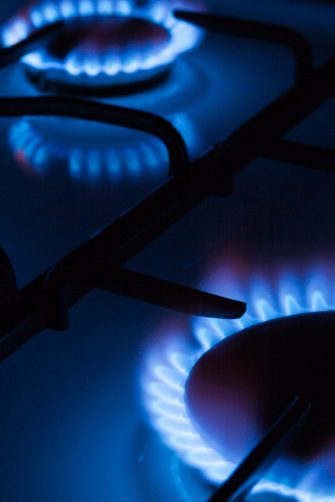The Australian government's gas strategy has stroked old tensions between advocates of fossil fuels and those who want our reliance on them to end.
The Australian government's gas strategy has stoked old tensions between advocates of fossil fuels and those who want our reliance on them to end.
The Australian government's Future Gas Strategy was released just days before the Federal Budget. But rather than being overshadowed, it has remained front and centre in public discussions.
The strategy raises concerns about the cost of energy to households, and the inequitable distribution of those costs.
It has also stoked old tensions between the advocates of gas — who see it as long-term option for dispatchable generation and gas as a necessary to deliver our Future Made In Australia — and those that see no place at all for fossil fuels in our medium-term future.
The tension appears to be coming from three places.
First, that we are not on track to achieving our climate targets — at home and abroad — and our trajectory would be further compromised by the development of any fossil-fuel resources.
Second, there are concerns that the strategy hinges on significant pieces of work being undertaken in another department that are not yet published and thus are not open to critique.
Third, the economic cost of the transition could be exacerbated by prolonging our dependence on expensive gas in the medium to long term.
Strategy suffers from a lack of detail
The suggestion that gas may play some role in our energy transition is not particularly contentious.
Recent UNSW analysis suggests that the lowest cost scenario for net zero by 2050 is one in which we continue to leverage our existing gas generation capacity. Importantly, the gas scenario modelled was designed to bridge the gap as renewable energy projects developed, but gas was not expected to be used out to 2050.
The question of further, future development of gas resource raises serious questions about how we can possibly achieve climate targets that are rapidly escaping us. As the Grattan Institute argued in 2023, "Australia will not hit its 2050 net-zero emissions target unless it gets off natural gas. Getting off gas will be complex and difficult, but delaying action will only make it more so".
Overall, the strategy is missing some detail and nuance. The document risks confusing the requirement for additional gas capacity to firm increasing renewable supply with the likelihood that it will remain less than 5 percent of our electricity generation mix.
There is a lack of detail about how, exactly, Australia can ensure new gas projects in the future will help the country, and our trading partners, meet climate targets.
This is particularly unclear given that the government's gas strategy appears to rely heavily on the unpublished six sectoral plans being developed in the Department of Climate Change, Energy, the Environment and Water. To deliver on the strategy's first principle of achieving net zero, the government refers to those not-yet-revealed sectoral plans, without detailing what they will involve.
Notably, the department developing those six sectoral plans is not the same department delivering the gas strategy (the Department of Industry, Science and Resources). This may be why the strategy lacks much exploration of novel technology options to substitute gas, and why these are notably absent in any of the immediate actions proposed.
It overlooks the potential of energy technology development
The strategy would be a more comprehensive and convincing document if it engaged more deeply with these many technology alternatives being deployed and developed to directly substitute gas. They include storage technologies, including batteries, to replace gas-powered generation, and hydrogen-based derivatives to replace the gas-fired molecules.
On the former, the US is already seeing a major shift towards batteries away from gas. On the latter, analysis undertaken for the NSW Office of Chief Scientist and Engineer suggests that it is possible to deliver green hydrogen relatively affordably (under $2/kg, which is the threshold to compete with fossil-fuel alternatives).
Emerging green fuels, such as green methanol and green ammonia, are in early days of development but offer potential, and can also be cost-competitive with further improvement. It is entirely conceivable that some or all of these technologies will be cost-effective and scalable by 2050.
Ensuring there is demand for these products instead of gas is critical to ensure the technology is further developed. And if we don't achieve the production cost targets for hydrogen, battery storage and other emerging renewable energy technologies, it is likely that the net zero transition will be more expensive than it needs to be.
It would be expensive and inequitable
For this reason, the government's gas strategy could be costly — and the costs may not be borne equitably.
The strategy, in its "Principle 4," involves offering households a choice of a new gas connection.
While this may be affordable today, it may not be in households' best interests. Households may need to pay more for gas in future, either because of the rising cost of the gas itself (as gas supply shrinks and competition increases), or because the cost of gas infrastructure ($12 billion) will be shared among an increasingly smaller pool of people as other households "electrify everything".
So, while gas may be cheaper for some households than electricity and other alternatives right now (in many cases it is not), locking households into gas appliances could present an issue later. It won't necessarily be cheap or easy for them to switch off their gas and electrify their appliances in the future.
The strategy acknowledges that it is important to support renters, those in social housing and low-income households. If the government is truly committed to this, it is likely better to help households electrify than to stay on the gas network.
The Australian PV Institute, which supports the development of solar photovoltaics (solar panels), estimates that Australians with no access to solar energy are already missing out on a potential AUD$9.3 billion per year. That's because, while rooftop solar panels can have a steep upfront cost to install, they result in cheaper energy bills in the long-term.
The government's gas strategy doesn't adequately account for the potential for solar technologies, and other energy-efficient electrification improvements, to underpin an equitable energy transition.
It seems that there is much more work to be done to articulate the role of gas in the clean, affordable and equitable transition to net zero.
Dani Alexander is the Chief Executive Officer of the UNSW Energy Institute. Her experience in the energy sector is broad having held roles in universities, government including the Australian Renewable Energy Agency, and industrial co-operative research centres.
The UNSW Energy Institute does not receive external funding. UNSW articles referenced have been written following research that has been funded by the Australian Research Council Centre of Excellence for Climate Extremes, the Office of the NSW Chief Scientist & Engineer and the Australian Renewable Energy Agency (a full list of acknowledgements can be found in the articles and reports themselves).
Originally published under Creative Commons by 360info™.
Related stories
-

How politics and climate could affect the Antarctic Treaty
-

Businesses and directors could face multi-million dollar penalties if they fail to disclose their climate impact
-

Green industry yes, conservation no: a budget for the people, not nature
-

“Solar will be everywhere”: how renewable energy will meet 100% of electricity needs by 2050




